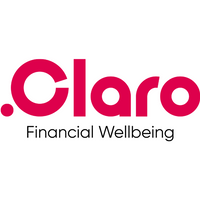Top tips for introducing financial coaching in the workplace
Financial coaching has grown in popularity in recent years among individuals and organisations, alike.
But what is financial coaching? The service - which is different from financial advice - is designed to offer bespoke, one-to-one guidance, to help people feel more confident with their money and make smarter financial decisions.
Much like a personal trainer, a coach will work with an individual to build a financial plan, address their needs and help them reach their goals.
There’s clearly an appetite for financial coaching and education in the workplace. Claro Wellbeing’s Workplace Today report revealed that just 17% of adults have access to financial coaching and education at work, yet one in two (50%) would like to be offered it.
In addition, two-thirds (67%) of employees say financial stress affects their work and another two-in-three (69%) say their organisation should do more to support their personal finances.
Top tips to help you introduce financial coaching to your workforce.
1. Market, market, market
The first step with introducing any new service is to communicate it to staff. You can use traditional channels, but may also consider ramping it up.
For example, you could organise a launch day to support any wellbeing initiatives you already have planned. Or invite a financial coach from your chosen provider to your business to chat with employees, answer any questions and explain the service.
Also think about visual marketing, such as posters in communal areas, to promote financial coaching or find other ways to reach staff.
2. Boost buy-in
Consider appointing an ‘internal champion’, or several, to help explain how financial coaching works and encourage buy-in.
Champions should be respected colleagues, with authority, who believe in the changes and are happy to get employees on board and answer questions.
3. Bring in the experts
Despite efforts by campaign groups, charities and other organisations to make money conversations easier, many people still find it difficult to talk about – especially with their employer. Bringing in expert financial coaches from an external provider, to run confidential sessions, is key. Be sure to communicate that information from the sessions won’t be shared with anyone else.
4. Keep access easy
Your workforce will be made up of different demographics who will have different needs and preferences. Consider a financial wellbeing provider that has different ways of delivering coaching.
5. Support with other education
Other resources, such as educational videos, articles, courses and webinars, can help employees and support their overall financial wellbeing.
Staff that engage with additional content and other education materials, alongside financial coaching, may develop a better understanding of their finances in general, which products are available and ways to achieve their goals.
6. Send timely reminders
Boost engagement for your new financial coaching benefit with regular communication. However, there’s a balance. Too many messages could feel like spam and put some employees off.
Consider including reminders in your regular communications or themed messages, such as any wellbeing events planned or in line with national initiatives, such as Talk Money Week.
7. Share success with the team
We all love success and one way of sharing the benefits of financial coaching is to showcase staff experiences. If someone has achieved their financial goal with the help of financial coaching or feels more confident with their money, then tell others about it.
Encouraging staff to share their successes will give internal credibility to the benefit, build trust in the service and encourage more people to try it.
Supplied by REBA Associate Member, Claro Wellbeing
A financial wellbeing benefit to support your team where it matters most







